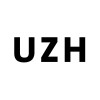
Study on the Oxygen Saturation in Pulsating and Non-pulsating Central Retinal Veins
Open Angle GlaucomaNormal Tension GlaucomaRetinal ischemia is thought to play an important role in the pathogenesis of glaucoma. Recent findings have confirmed that there is a direct correlation between the levels of venous oxygen saturation and the degree of the glaucomatous disease, presumably due to a decrease in retinal cell metabolism. However, glaucoma patients have been suggested to have a different pattern in retinal venous circulation. For instance, the observation of a visible pulsating central retinal vein is a phenomenon that can be seen in up to 98% of the healthy individuals but is identifiable in less than 50% of glaucoma patients. While the nature of these venous changes are not year clear, the lack of a visible pulsating flow could suggest an increased intraluminal venous pressure due to some obstruction from both ocular or extraocular structures. This undetermined increase in venous pulse pressure could then significantly decrease perfusion pressures and therefore further decrease oxygen supply to the retinal tissues. The investigators will therefore try to determine if there is a significant difference between the oxygen saturation of the retinal vessels in both glaucoma patients with and without a visible pulsating central vein

Early Diagnosis, Pathogenesis and Progression of Open Angle Glaucoma
Primary Open Angle GlaucomaSecondary Open Angle Glaucoma1 moreThe Erlangen Glaucoma Registry is a clinical registry for cross sectional and longitudinal observation of patients with open angle glaucoma (OAG) or glaucoma suspect, founded in 1991. The primary aim is the evaluation of diagnostic and prognostic validity of morphometrical, sensory and hemodynamical diagnostic procedures. No therapeutic studies are performed.

Automatic vs. Manual Optic Disc Planimetry
Open Angle GlaucomaManually and automatically by mashing learning algorithm optic disc will be evaluated (planimetry).

Prevalence of Dyschromatopsia in Glaucoma Patients
Open Angle GlaucomaGlaucoma is a progressive disease resulting in loss of retinal nerve cells and their axons (retinal nerve fibers). Retinal nerve fibers are ordered in a special manner when they enter the optic nerve. Hence, damage to the retinal nerve fibers by glaucoma results in visual field defects at certain locations. Furthermore, the retinal nerve fiber layers from different receptors for different colors are ordered in a special manner as well. Thus, it is possible that glaucomatous damage causes color vision dysfunction (dyschromatopsia). At the moment there is disagreement whether dyschromatopsia occurs at early- to mid-stage or only in end-stage glaucoma. By testing color vision in glaucoma patients the prevalence of dyschromatopsia in glaucoma and in different stages of the disease will be investigated.

Ocular Fluorophotometry for Glaucoma Treated With Cyclo-coagulation Using High Intensity Focused...
Refractory Open Angle GlaucomaMonocentric prospective study conducted in two phases evaluating the secretion and elimination of aqueous humor by fluorophotometry in patients with glaucoma treated with cyclo-coagulation with ultrasound. Population selected: - Patients with refractory open angle glaucoma despite previous treatments currently validated for glaucoma. The purpose of our study is: - To evaluate the mechanism of action of glaucoma treatment by cyclo-coagulation with high intensity focused ultrasound in studying the secretion and elimination of aqueous humor by fluorophotometry. Planning: First phase: 2 patients (feasibility study) If reduction of at least 10% of the flow of aqueous humor production at one month in the first two patients in the feasibility study, further in second phase. Second phase: 6 patients

Expanded Access to Bimatoprost (Durysta)
Open-angle GlaucomaThis is an expanded access program (EAP) for eligible participants. This program is designed to provide access to Durysta (Bimatoprost) prior to approval by the local regulatory agency. Availability will depend on territory eligibility. A medical doctor must decide whether the potential benefit outweighs the risk of receiving an investigational therapy based on the individual patient's medical history and program eligibility criteria.

Changes in Choroidal Thickness After Non Penetrating Deep Sclerectomy
Choroidal ThicknessOpen Angle Glaucoma1 moreProspective and observational study to determine if choroidal thickness increases after non penetrating deep sclerectomy in patients with open angle glaucoma

Saccadic Eye Movements Are Impaired In Glaucoma
GlaucomaOpen-AngleThe purpose of this study is to determine whether rapid eye movements called saccades are impaired in glaucoma, a neurodegenerative disease of visual pathways.

Comparison of Retinal Nerve Fiber Layer (RNFL) Thickness Measurements by Time-Domain and Spectral-Domain...
Primary Open Angle GlaucomaMeasurement of RNFL thickness by OCT is at a cornerstone for the correct diagnosis and monitoring of progression of glaucomatous optic neuropathy. Spectral domain technology has enabled better reproducibility with better axial resolution in the measurement of RNFL thickness. A comparative study among Stratus, Cirrus and RT-View will enable clinicians to determine differences among various instruments.

Glaucoma and Sleep Quality
GlaucomaOpen-AngleThis study is a observational, prospective, case-control, monocentric study. The main objective is to study the polysomnographic characteristics of sleep in glaucomatous and non-glaucomatous subjects, using data collected in the MARS database of CHU Grenoble-Alpes, to compare the total sleep time of glaucomatous and non-glaucomatous subjects, measured during the polysomnographic examination collected in the database. The secondary objectives are the exhaustive characterization of the sleep architecture in glaucomatous and non-glaucomatous subjects, from data collected in the MARS database of the CHU Grenoble-Alpes Length of sleep period Time spent in phase 1, 2, 3 and 4 Micro-alarm clocks index Time with arterial oxygen saturation less than 90% Apnea-hypopnea index
